How Do I Implement Insurance Into My Business for Employees?

How Do I Implement Insurance Into My Business for Employees? In order to implement insurance into your business, you need to understand the available different types of coverage. It can be done by understanding what your employees' needs are.
For example, if you have employees who work in dangerous environments, then you may want to invest in workers' compensation insurance. On the other hand, if you have many office-based employees, you may want to invest in disability insurance for them.
The next step is figuring out how much coverage your company needs based on the number and type of employees. You should also consider the benefits that come with each type of coverage. For example, some disability policies offer sick leave pay while others do not. Let's dive into more details!
Types of Business Insurances
There are a few different types of insurance that your business may need to consider in order to provide coverage for your employees. These include health, life, disability, property and casualty.
- Health insurance is one of the most important types of insurance for your employees. It can help cover the cost of medical care, prescriptions, and mental health services.
- Life insurance can provide financial protection for your employees' families in the event of their death.
- Disability insurance can help replace a portion of an employee's income if they cannot work due to an injury or illness.
- Property and casualty insurance can protect your business from damages caused by events like fires, theft, or natural disasters.
How Can I Find Affordable Health Insurance for My Employees?
As a business owner, you want to ensure your employees have access to affordable health insurance. There are a few ways to go about this.
One way is to offer a group health insurance plan. You can work with an insurance broker to find a plan that meets your budget and your employees' needs. Another way to provide affordable health insurance is to offer a health reimbursement arrangement (HRA). With an HRA, you reimburse your employees for their out-of-pocket medical expenses up to a certain amount each year.
You can also encourage your employees to shop around for their own individual health insurance policies. Some employers offer a stipend to help offset the cost of premiums. And finally, you can offer other benefits that promote good health, such as onsite fitness facilities or wellness programs.
How Does Employer-Sponsored Health Insurance Work?
As an employer, you may be wondering how exactly health insurance works for your employees. Here's a quick rundown: most employer-sponsored health insurance plans are offered through a group policy.
It means that the insurance company agrees to provide coverage to a group of people (in this case, your employees) at a discounted rate. In order to qualify for this discount, you must have a certain number of employees enrolled in the plan.
Once you have a group policy in place, your employees can then choose from a variety of different plan options. The most common type of plan is a PPO or preferred provider organization.
With a PPO plan, your employees can see any doctor that accepts the insurance, but they'll get the best rates by using doctors within the network. Other types of plans include HMOs, health maintenance organizations, POS plans, or point-of-service plans.
Once your employees have selected a plan, they'll need to pay premiums every month in order to maintain their coverage. The amount of the premium will vary depending on the type of plan they have and their personal circumstances (like their age and whether they smoke).
Specific coverage types that are important and why businesses must have them
A business must have these coverage types in order to stay competitive and protect its employees. Health care coverage is an important part of any company's benefits package. It protects employees against the costs of medical expenses, which can be difficult for a single person to shoulder alone.
A dental plan is also a necessity as it provides employees with routine checkups and treatments that are needed in order to maintain oral health. Workman's compensation provides coverage for injuries that occur on the job, including accidental death or dismemberment.
Coverage can be purchased through an individual plan or through a group plan. Individual plans typically provide coverage for employees and their dependents, while group plans usually cover employees along with the dependent children of other employees.
The importance of insurance for your business
Insurance is a type of risk management. It is a form of protection from the financial loss that may be caused by accidents, natural disasters, or other events.
Businesses protect themselves against the unexpected by investing in insurance policies. These policies can cover the business's property and assets, employees and their families, as well as the business itself.
The benefits of having insurance for your business are many:
- You can protect your company's assets with property coverage and liability coverage;
- You can provide for your employees with life insurance and health insurance;
- You can ensure that you have the resources to keep operating with liability coverage that covers lawsuits; * You can protect yourself from financial losses due to natural disasters or other events with a rider that covers your home, car and personal possessions;
- You can protect yourself from personal liability with a rider that protects your legal profession, family members and personal property.
So how do I implement Health Insurance Program in my business?
If you want to offer insurance to entice new employees, you've probably got tons of questions on how to do so. There are many things to consider when designing your employee benefits—health insurance is one of the most popular ones.
Complete Payroll Solutions helps thousands of small and medium-sized businesses to offer health insurance. Health insurance can be important for many employees, but it can take hours to understand all the rules and requirements when it comes to starting a group plan.
To help you understand what's involved in implementing a healthcare benefit, we will discuss some ways to provide health insurance for employees are?
If you are an employer, it depends on the size of your business to determine if you offer healthcare benefits. If you work for a company with less than 50 employees and less than 50 full-time equivalents, you don't need to offer health insurance coverage.
There is a tax penalty for employers with 50 or more employees if they do not offer health insurance with the Affordable Care Act. A pay-or-play rule applies to all employers who have more than an average of 50 full-time employees and employ at least one individual who receives coverage from an ACA marketplace.
If the employee's contract guarantees health coverage, they may need it. Although not required, you may want to offer health coverage on a voluntary basis for various reasons. Copymatic offers illustrated content created with the same quality as humans, meaning a captivating blog post about the topic of your choice is only one button-press away.
As an employer, you can deduct the cost of health insurance as a business expense, and credits may also be available. Employers win in this situation because they see an increase in productivity. It can be attributed to improved employee health, which leads to fewer call-ins and more focus on the job.
Affordable health insurance through the Affordable Care Act
If you are an employer and offer employer-sponsored health insurance, you must provide it to all full-time employees. If you fail to do so, your workers may qualify for premium tax credits through the Affordable Care Act.
You can only offer Health Insurance to part-time workers that work at least 10 hours a week. Starbucks, for example, offers benefits including Health Insurance once an employee works 240 hours in 3 consecutive months.
What is the difference between for-profit, non-profit & non-compensated plans?
Coverage may not take effect during certain months for plans, with coverage for the next month beginning on the first day of the following month. Looking for ways to integrate a healthcare plan into your business?
When designing a health insurance plan for employees, you need to think about what your workers want. Workers will want to know which benefits are offered, how much they cost and the quality of the hospital provider network.
You will want to benchmark benefits against the market and survey employees to see what they believe is a competitive benefit. When deciding about the benefits for your employees, you should take these steps:
- Collect data on age, location, and other demographic information of your eligible employees to get quotes for the coverage their dependents will need.
- Review your options. When deciding on benefits, you'll want to make sure that you review the quotes to find the best option for your needs and for your budget.
- Educate employees about their options for health insurance, either in person or virtually. You'll want to provide them with education so they can understand the plans and pricing and make an informed decision about coverage.
- Submit all required documents to the insurance carrier two to three weeks in advance of coverage.
- Employers need to train their employees on how to sign up for payroll deductions and distribute materials. After this step, they will be notified when they can order ID cards from their provider.
What you need to know about implementing insurance for your employees?
It could take up to a year to set up your plan. You need to start well in advance of when you plan on starting the plan because it depends on many factors. For example, some factors may be when your insurance carrier needs to have certain information from the census collected by ID cards.
There are a lot of things to take into consideration when starting a new health plan for your company. It's crucial to get these all right for the success of your new benefit offering.
When to provide insurance to employees?
Providing insurance to employees is a vital aspect of employer-employee relations. The law dictates which types of benefits need to be included for each employee. Employers must provide health insurance, retirement benefits, and life insurance if the employee asks for it. Not providing these benefits would be a violation of the law.
Many employers are not providing insurance to their employees. It is because the employer isn't sure of which type or plan to use. Employers should provide a basic plan that covers the following: doctor visits, hospitalization, prescription drugs, and family coverage. The employer needs to consult with an insurance agent for more complicated plans.
There are some situations that may warrant providing health insurance to employees, such as a company with many part-time employees or a business with a high turnover rate. There are two ways to do this, either by using an insurance provider or by using self-insurance.
How to set up payroll deductions for health insurance
To set up payroll deductions for health insurance, the employee will need to get a form from their employer. This form is used for employees that have self-insured health coverage. Employees that have an HMO or PPO plan will need to fill out a different form.
These forms are usually available in the company's human resources department and are usually on the company's website.
The first thing on the form is a table where the employee fills in their name, date of birth, social security number, and other information.
Next is the medical plan selection. Employees will choose which medical coverage they want from the list of choices provided, such as family or single.
If you are an employer, payroll deductions can be a great way to help employees save for their healthcare needs. You can deduct the amount that is being withheld from the employee's paycheck and use it to purchase insurance coverage.
Conclusion
As a business owner, it's important to consider insurance for your employees. There are many factors to take into account when deciding on the type of insurance to offer and how to implement it into your business. By taking the time to research your options and understand your employees' needs, you can make sure you're providing the best possible coverage for your team.
Do you feel like you are struggling with putting "strategy" and "business growth concepts" in place that make a difference? Doing it all is overwhelming! Let’s have a honest discussion about your business and see if the Power of 10 can help you. Click “HERE” to have a great conversation with our team today.
Written and Published By The Strategic Advisor Board Team
C. 2017-2021 Strategic Advisor Board / M&C All Rights Reserved
www.strategicadvisorboard.com / info@strategicadvisorboard.com











